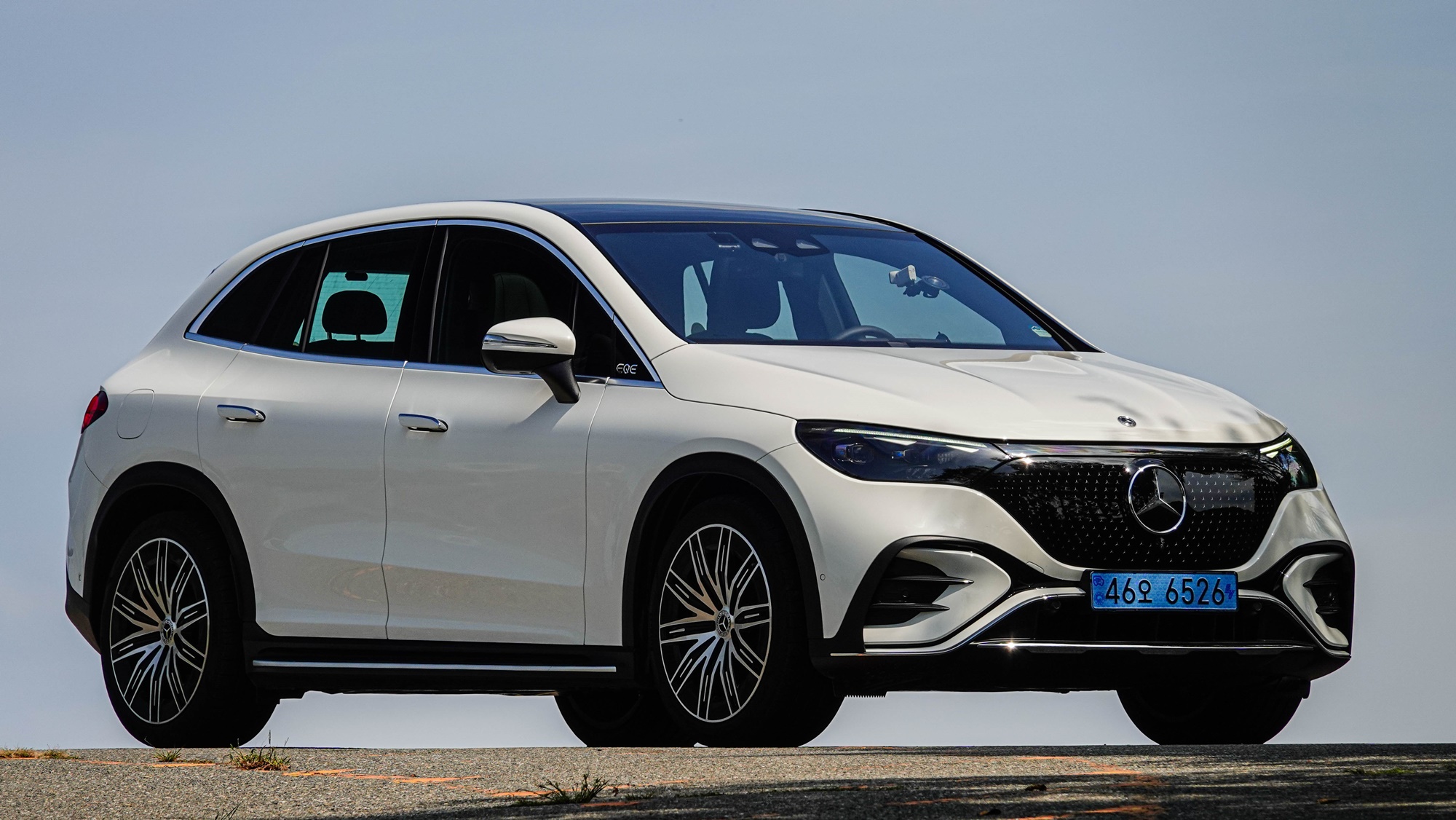
Finally, we have encountered the EQE SUV. After a brief showcase at the Seoul Mobility Show earlier this year, the vehicle has now been test-driven following its domestic launch in July.
This is a luxury electric business SUV built on Mercedes Benz’s dedicated electric vehicle architecture EVA2. Utilizing a dedicated electric vehicle architecture also means that there’s ample space. The vehicle length is 4,880mm with a wheelbase of 3,030mm, demonstrating proportions that are impossible to achieve with internal combustion engines. As the wheelbase lengthens, the interior space correspondingly expands.
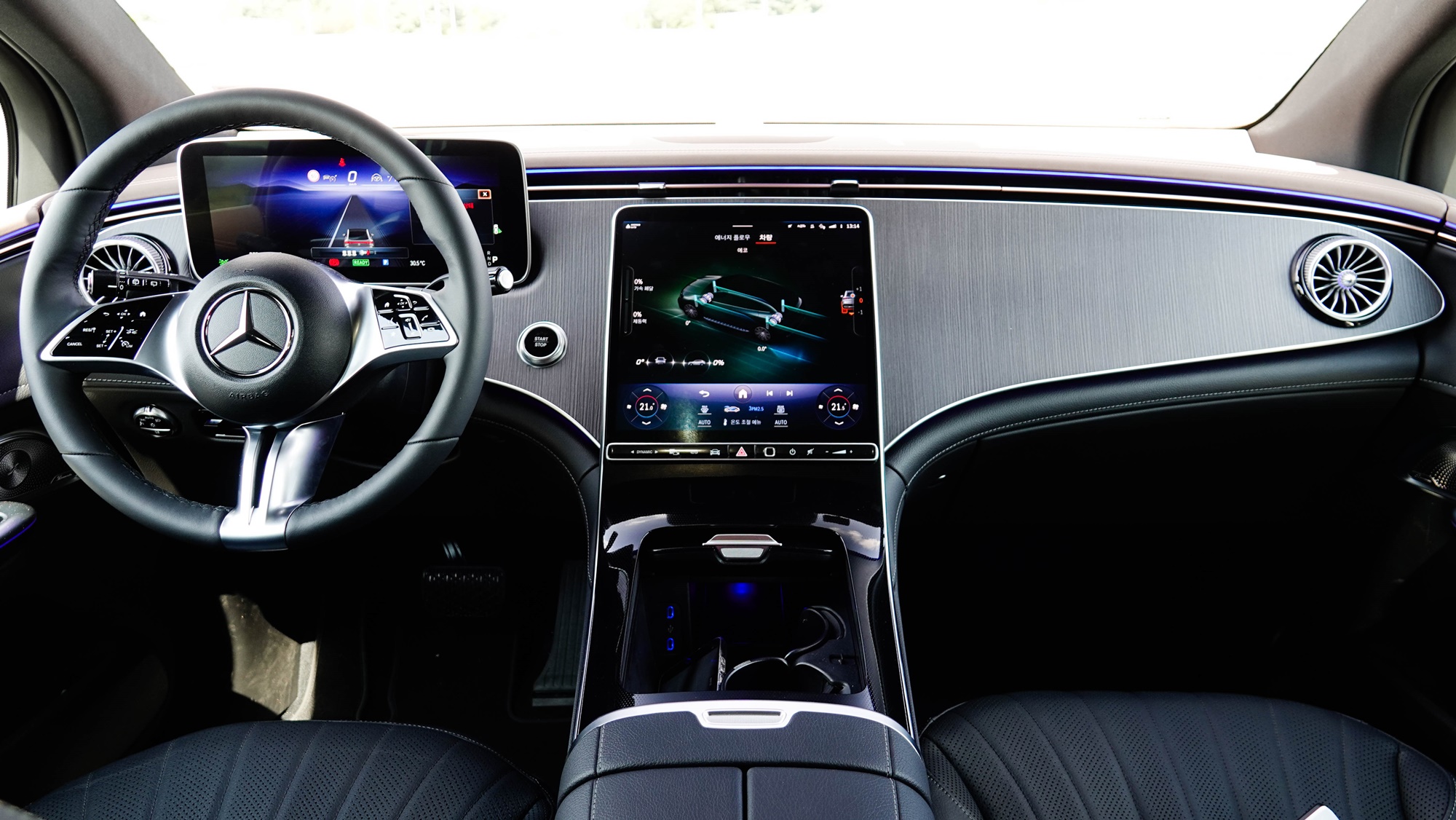
Sitting inside, there’s enough space left in front of your knees that there’s no need for separate measurements. You can fully enjoy the spaciousness that the area itself provides. The rear seats can be folded in a 4:2:4 ratio, with a standard trunk space of 520L, which expands to a maximum of 1,675L when the rear seats are laid down.
The drag coefficient (Cd) is 0.25. Achieving a drag coefficient under 0.3 in an SUV of this size is quite impressive. The new Santa Fe boasts a Cd of 0.29, providing some context for the significance of 0.25. With a width of 1,930mm and a height of 1,685mm, it is a large SUV, and the ability to maintain such a low drag coefficient is attributed to the power of design. This design takes into account airflow under the vehicle, which is not visible from the outside.
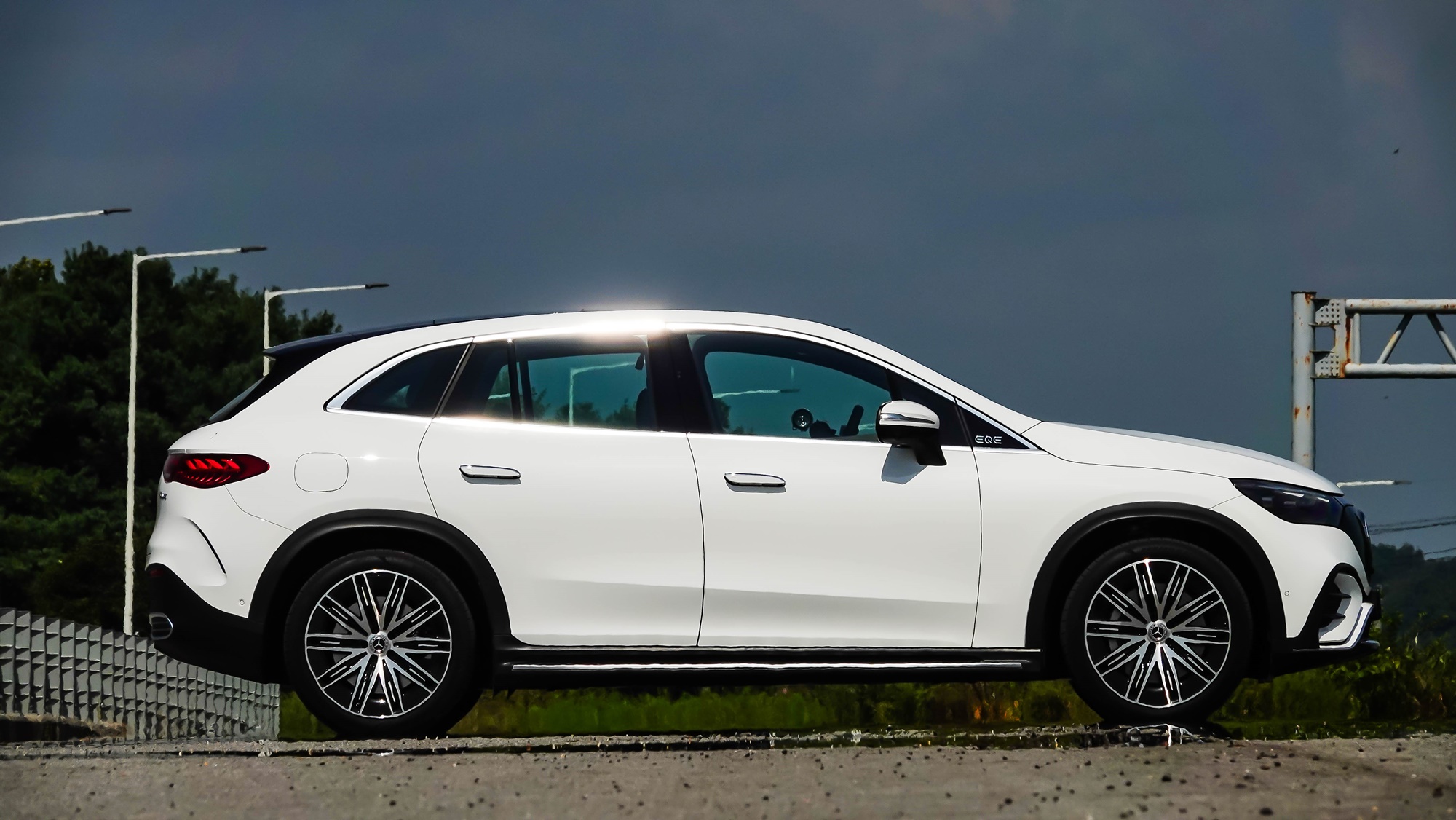
This vehicle uses an 88.8kWh lithium-ion battery made up of 10 modules, using the NCM811 ternary battery technology. The range on a single charge is certified at 401 km domestically, with potential for much further during good weather. However, during winter, the range decreases. At -10 degrees Celsius, using the heating system, you can expect a range of around 370 km (according to WLTP standards). The heat pump feature utilizes waste heat from the battery for heating, which enhances battery efficiency during winter.
The 4MATIC system, meaning all-wheel drive, is implemented. In stable driving conditions where all-wheel drive is not necessary, it operates in rear-wheel drive. The principle of the Disconnect Unit (DCU) is applied to disconnect the front motor.
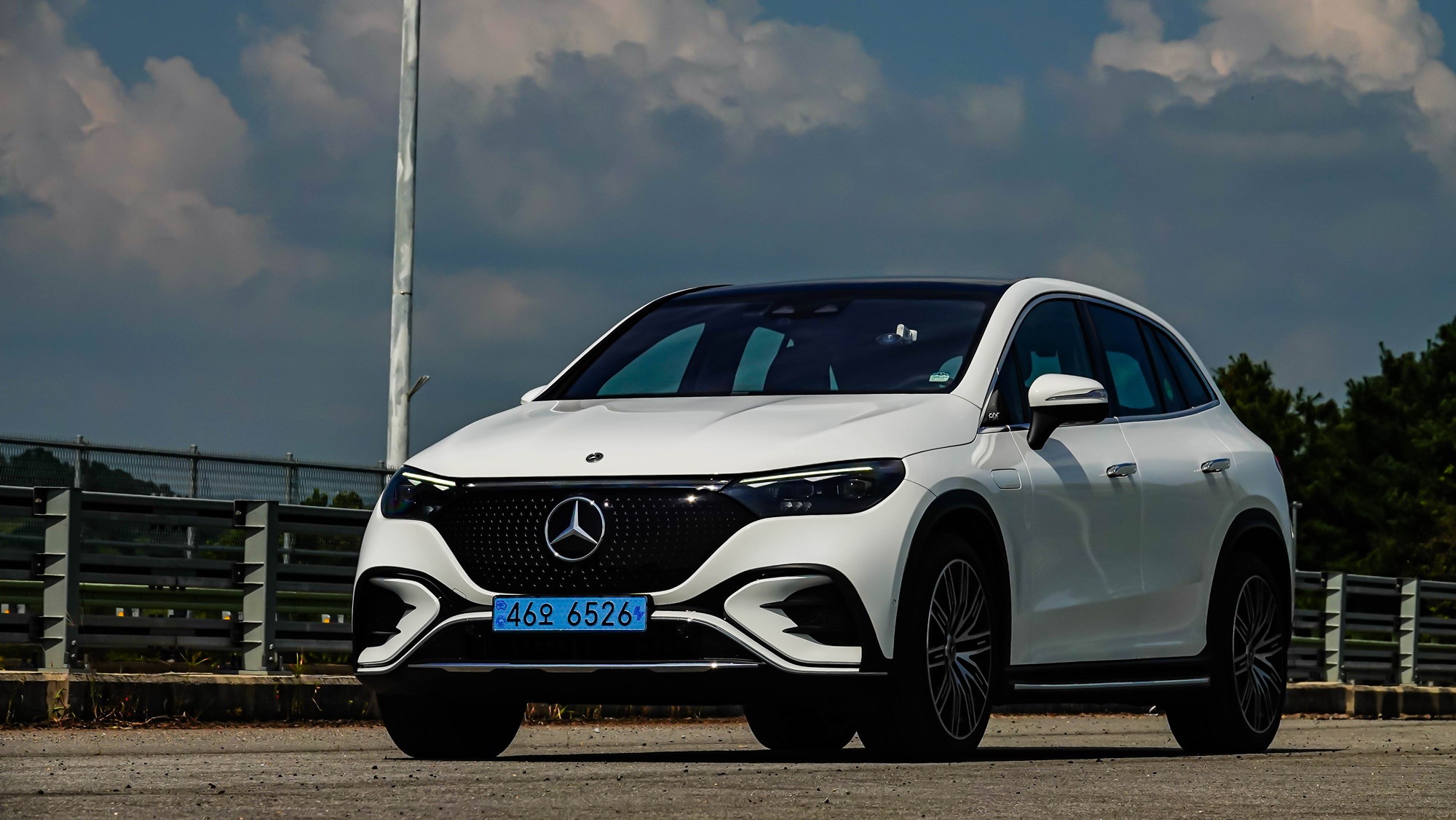
Each axle has a motor, providing a total output of 408 horsepower and 300 kW. The curb weight is 2,510 kg, resulting in a power-to-weight ratio of 6.15 kg per horsepower. The manufacturer claims 0-100 km/h acceleration in 4.9 seconds, while our measurement using a GPS device recorded a best time of 5.01 seconds.
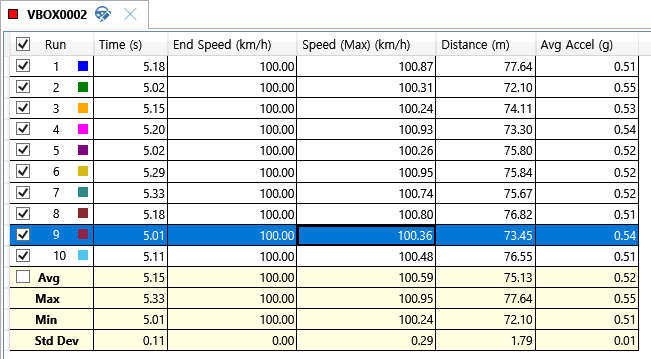
The headlights feature bright and smart digital lights, achieving a resolution of over 2.6 million pixels through 1.3 million micro-mirrors, making them usable as a beam projector.
The instrument cluster is equipped with a 12.3-inch display, while the center fascia monitor utilizes a 12.8-inch OLED display. The heads-up display adds an expansive visual experience.
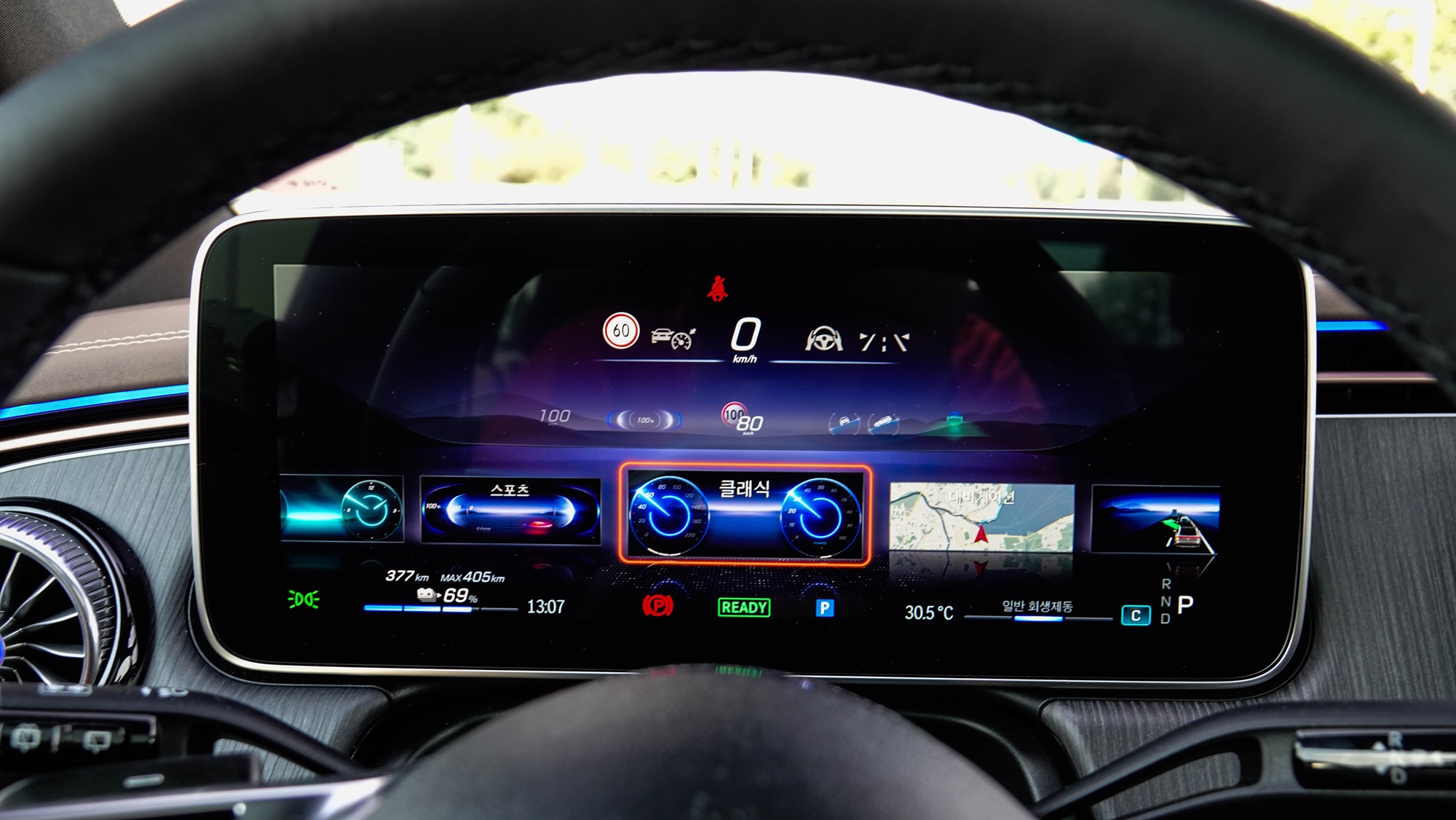
The AirMatic air suspension adjusts the vehicle height, and the adaptive damping system individually controls each wheel based on drive mode, speed, and load. In off-road mode, the vehicle height increases by 25mm, reverting to normal height when exceeding 70km/h. If reduced to below 50km/h, the height elevation of 25mm is re-enabled.
In off-road mode, a transparent hood feature is also activated, showing the conditions under the hood along with the tires on screen. This is highly beneficial when navigating through water passages or lots of obstacles.
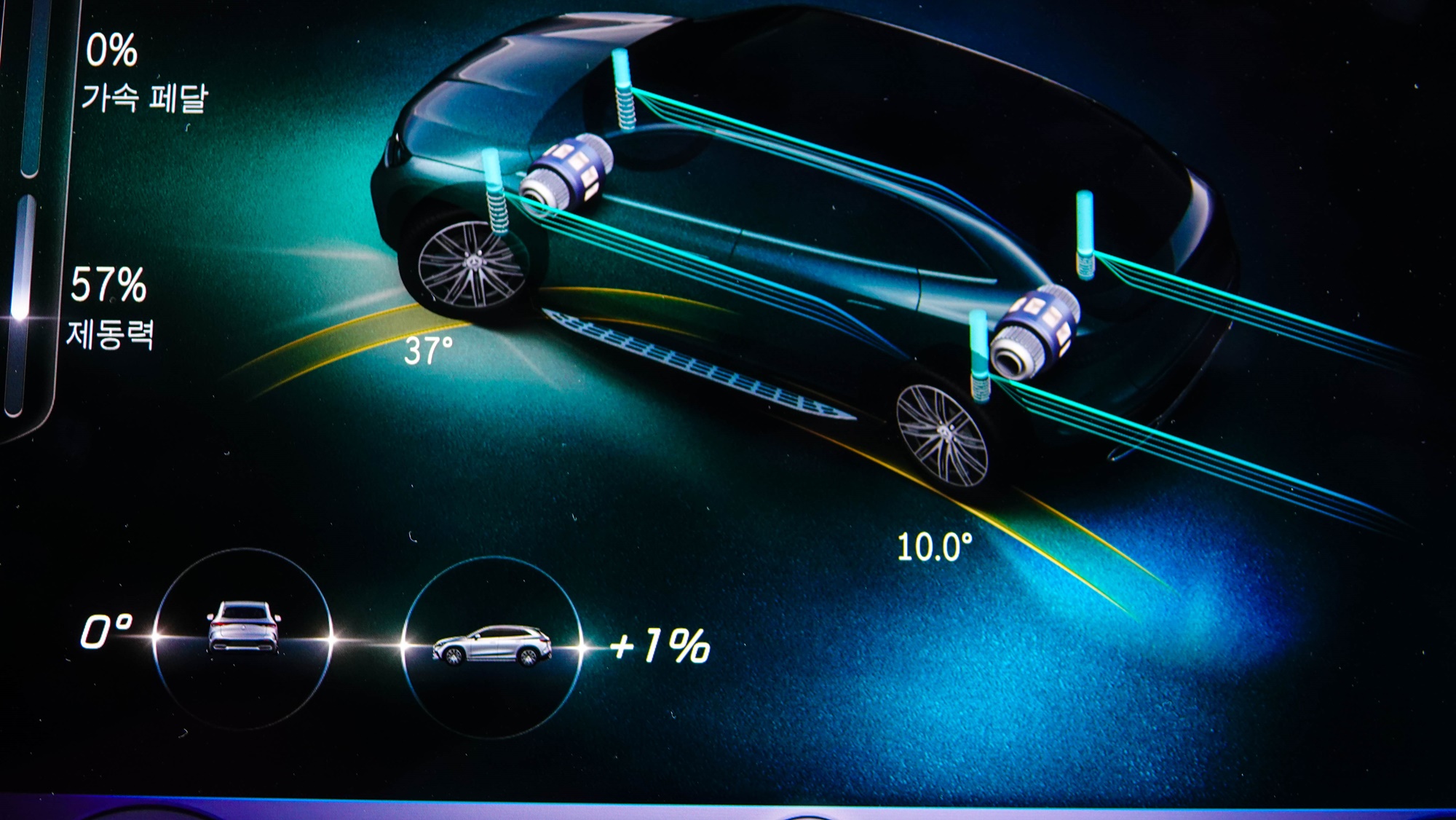
The steering precisely turns two revolutions. Managing this large vehicle with just two turns of the steering wheel is remarkable; with the rear axle steering, it moves more dynamically. The rear wheels turn up to a maximum of 10 degrees at speeds below 60 km/h, and at higher speeds, they turn up to 2.5 degrees. At low speeds, the front and rear wheels turn in opposite directions, while at high speeds they rotate in the same direction. The turning diameter amounts to 10.5m, allowing for sharp turns in tight spaces.
The Driving Assistance Package Plus includes a lane change assist feature. When sufficient space is available, lightly touching the turn signal initiates a lane change. During this, the driver must keep their hands on the steering wheel; otherwise, a warning sound will trigger, halting the maneuver. Simply resting your hands lightly on the wheel allows the lane change to be executed smoothly. Naturally, this isn’t available at any time; conditions such as ample space and gripping the steering wheel must be satisfied. In essence, this means that this function operates effectively only in scenarios where even novice drivers can manage it. For most drivers, this will be an entirely new and intriguing feature, but it also represents a significant step towards future driving systems.
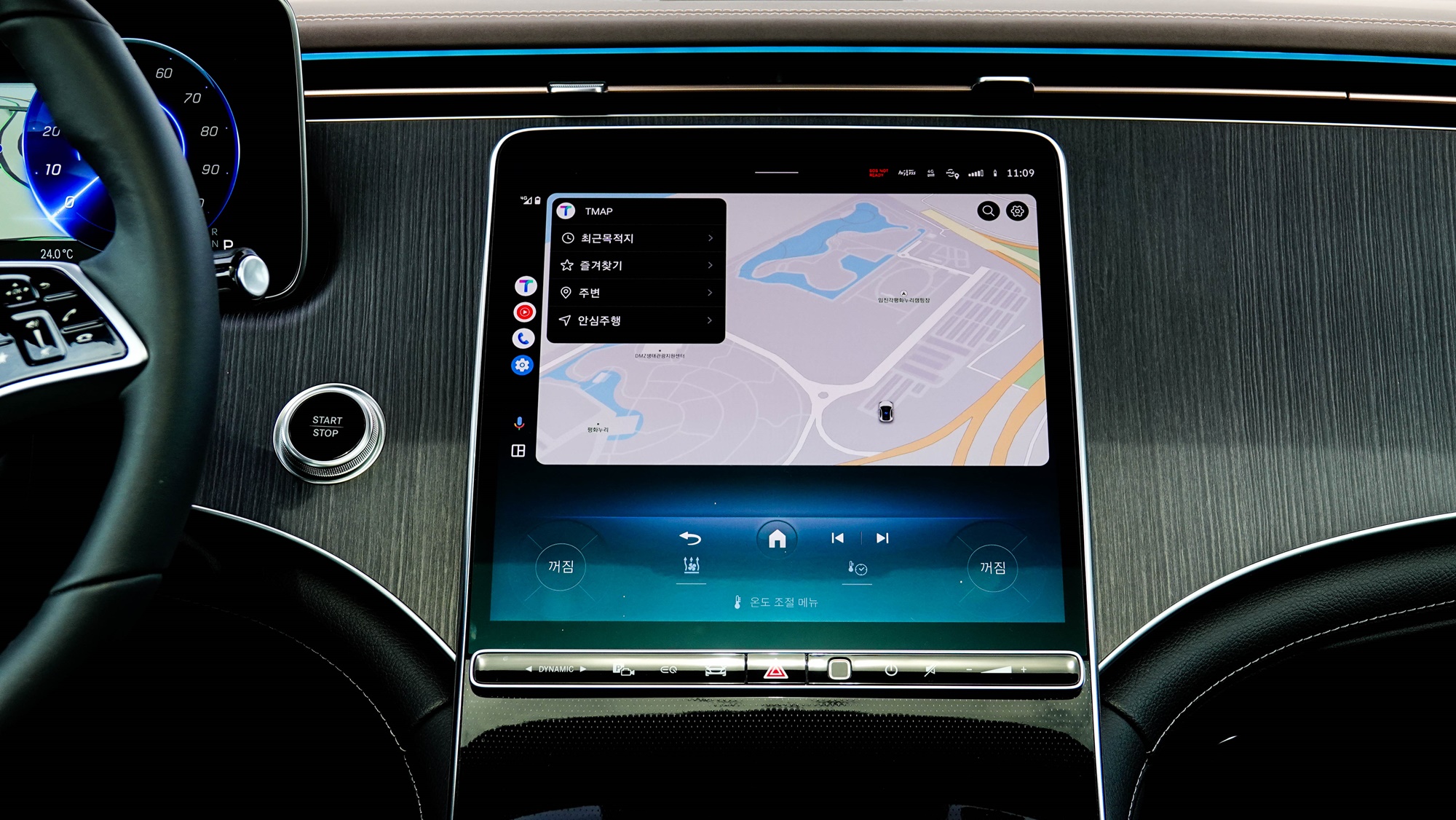
The electric vehicle sound options include ‘Silver Wave,’ ‘Vivid Flux,’ and ‘Roaring Pulse.’ Personally, I’m not fond of such sounds; I’d prefer a quiet drive without manufactured noise.
In a silent electric vehicle, the quality of the audio system holds greater significance. The Burmester 3D surround sound system is an alluring audio option. It delivers high-quality sound with a total output of 710 watts and 15 speakers.
The official combined efficiency is rated at 3.8 km/kWh, with real-world performance between Paju and Seoul measuring 7.7 km/kWh.
The retail price is 128.5 million KRW without any subsidies. The appeal lies in the ability to purchase it without worrying about subsidies.
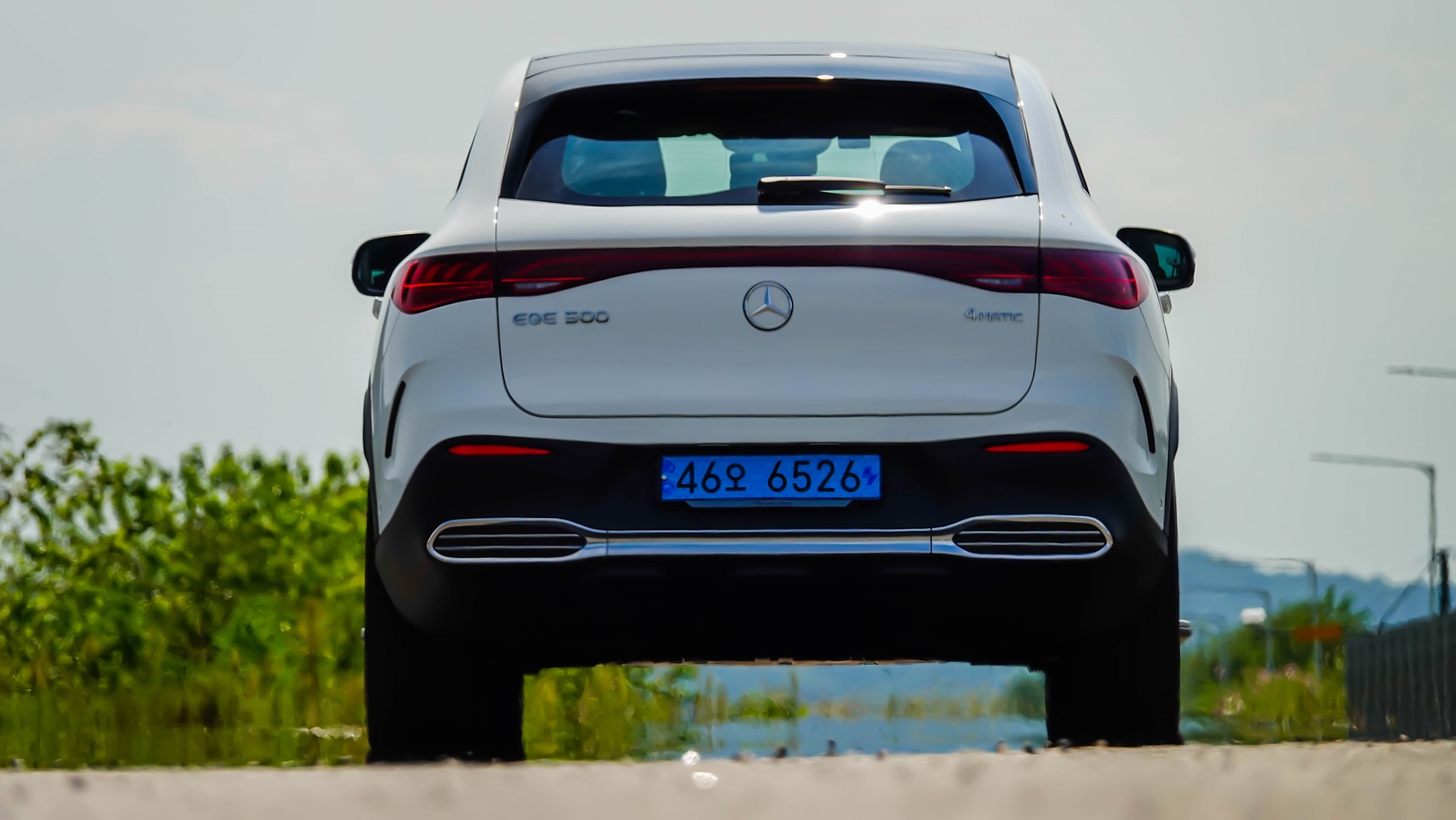
Oh Jong-hoon bluntly remarks:
There’s no reservation charging. So if you want to take advantage of nighttime electricity prices, you’ll have to wait until 11 PM to start charging. One might feel discouraged about buying an expensive electric vehicle just to end up waiting. Driving a vehicle over 100 million KRW, how much do you expect to save by utilizing nighttime electricity? This is a valid point. However, it is also frustrating to know that cheaper power exists while you end up paying more for charging. If a reservation charging feature were available, this issue could be resolved. It’s not a cutting-edge technology but a necessity that should be implemented quickly.
The outdated name featuring ‘SUV’ is problematic too. Since the EQE line includes both sedans and SUVs, it’s unavoidable to include ‘SUV’ in the name. This indicates an issue with Mercedes-Benz’s overall model naming system, which deserves careful consideration to ensure that all vehicle names sound appealing. ‘EQE SUV’ truly sounds something like an outdated title.
-

Digital lights that achieve a resolution of over 2.6 million pixels through 1.3 million micro-mirrors. Photo by Oh Jong-hoon. -

Fuel efficiency recorded while traveling 28 km on the freeway. Photo by Oh Jong-hoon. -

The heads-up display displayed on the large screen. Photo by Oh Jong-hoon. -

The Burmester 3D surround sound system. Photo by Oh Jong-hoon. -

A wireless charging device and two C-USB ports. Photo by Oh Jong-hoon. -

Buttons to control various functions. Photo by Oh Jong-hoon. -

The off-road mode’s instrument display. Photo by Oh Jong-hoon. -

Screen displaying information in off-road driving mode. Photo by Oh Jong-hoon. -

The steering wheel right button. Photo by Oh Jong-hoon. -

Buttons for controlling the driving assistance system. Photo by Oh Jong-hoon. -

The design of the instrument cluster can be customized. Photo by Oh Jong-hoon. -

The rear view showcases the design DNA of the EQ series. Photo by Oh Jong-hoon. -

The rear view showcases the design DNA of the EQ series. Photo by Oh Jong-hoon. -
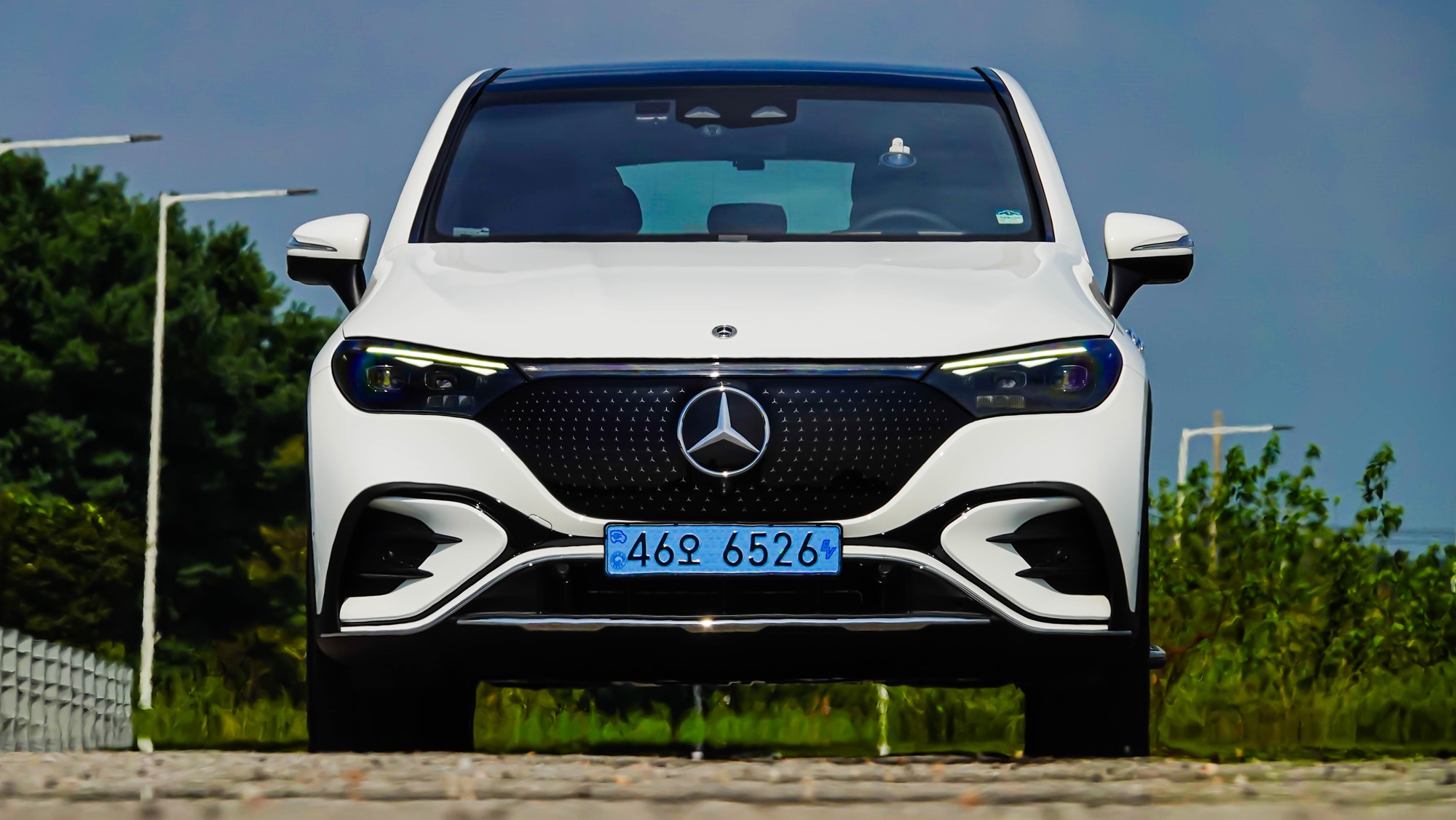
Front view. The black radiator grille is densely packed with the Mercedes star logo. Photo by Oh Jong-hoon. -

The rear seat climate control system can be adjusted separately for left and right sides. Photo by Oh Jong-hoon. -

The monitor features a 12.8-inch OLED display. Photo by Oh Jong-hoon. -

A spacious storage area located below the center fascia. Photo by Oh Jong-hoon. -

Utilizing the dedicated EVA2 platform for electric vehicles, the space has expanded, providing a flat rear seat floor. -

The certified combined efficiency is 3.8 km/kWh. Photo by Oh Jong-hoon. -

Utilizing 265/40 R21 tires. Photo by Oh Jong-hoon.
Oh Jong-hoon yes@autodiary.kr

